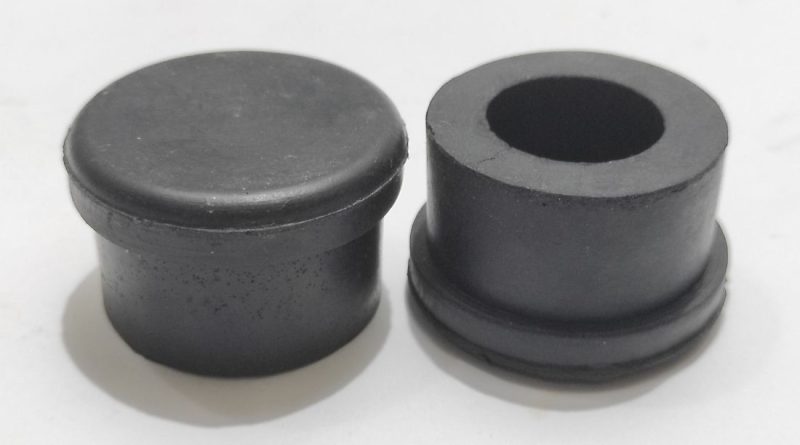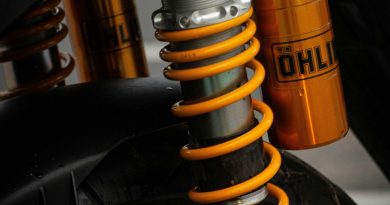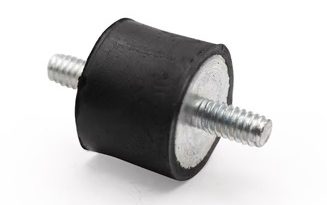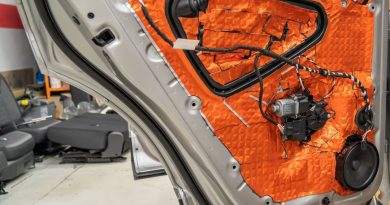How to Select a Vibration Isolator for Optimal Performance
Choosing the right vibration isolator is essential for ensuring optimal performance in various applications, including machinery, vehicles, and buildings. This guide outlines how to select a vibration isolator that enhances performance, reduces wear, and extends equipment lifespan.
Understanding the Basics and How to Select a Vibration Isolator
What is Vibration Isolation?
Vibration isolation involves reducing or eliminating vibrations between surfaces, which is crucial in preventing damage or discomfort to sensitive equipment. By understanding the fundamentals of vibration isolation, you can make informed choices when selecting an isolator.
Why Learning How to Select a Vibration Isolator is Important
Vibrations can create several problems, including:
- Equipment Damage: Excessive vibrations can lead to machinery fatigue and failure.
- Noise Reduction: Isolating vibrations minimizes noise, creating a more pleasant environment.
- Improved Performance: Equipment that runs without unwanted vibrations performs better and lasts longer.
How Vibration Isolation Works
Vibration isolators absorb or deflect vibrations using various materials and designs, which can be categorized into:
- Passive Isolation: Utilizes materials like rubber or springs to absorb vibrations passively.
- Active Isolation: Employs sensors and actuators to dynamically detect and counteract vibrations.
Understanding these concepts is crucial as they influence your choice of vibration isolator and learning how to select a vibration isolator.
How to Select a Vibration Isolator and Key Factors to Consider
Load Capacity
Understanding how to select a vibration isolator is vital. Each isolator has a specified load capacity, and exceeding it may lead to failure. Calculate the total weight of the equipment and any dynamic loads to ensure the isolator can handle these forces.
Frequency Response
Isolators perform better at specific frequency ranges. Knowing the operating frequency of your machinery is essential for matching it with an appropriate isolator.
- Low-Frequency Isolators: Best for heavy machinery with low operational speeds.
- High-Frequency Isolators: Suitable for lighter machinery with high-speed operations.
Environmental Conditions
Consider the environment where the isolator will be used. Factors such as temperature, humidity, and chemical exposure can significantly affect the isolator’s performance and lifespan. For instance, a silicone-based isolator may be better suited for high temperatures than a rubber one.
Installation Space
The available installation space can influence your choice of isolator. Some isolators require more room than others, so measuring the area and considering the dimensions of the isolator is crucial.
Cost vs. Performance
While opting for the cheapest option may be tempting, it is essential to balance cost and performance. Investing in a high-quality vibration isolator can yield long-term savings by reducing maintenance and replacement costs.
Types of Vibration Isolators: Pros and Cons
Rubber Isolators
| Pros | Cons |
| Cost-effective | Temperature sensitive |
| Good damping characteristics | Limited load capacity |
| Easy to install |
Spring Isolators
| Pros | Cons |
| High load capacity | Size can be an issue |
| Effective at low frequencies | Requires maintenance |
Pneumatic Isolators
| Pros | Cons |
| Active damping | Complex installation |
| Versatile | Higher cost |
Viscoelastic Isolators
| Pros | Cons |
| Good for high frequencies | Temperature dependency |
| Durable | More expensive |
Familiarizing yourself with the pros and cons of each type of vibration isolator will help you make a more informed decision based on your specific needs.
Assessing Load Requirements for Effective Isolation
Static Load vs. Dynamic Load
When selecting a vibration isolator, it is crucial to differentiate between static and dynamic loads:
- Static Load: This refers to the weight of the equipment when stationary. Ensure the isolator can comfortably handle this weight.
- Dynamic Load: This includes forces on the isolator during operation. Dynamic loads can vary based on operating conditions, so it is essential to account for these changes.
Load Distribution
Understanding how load distributes across the isolator is vital. Some equipment may not distribute weight evenly, leading to premature failure if not correctly assessed.
- Point Loads: Concentrated loads that may require specialized isolators.
- Uniform Loads: Easier to manage with standard isolators.
Calculating Load Requirements
To calculate load requirements for your vibration isolator:
- Determine Total Weight: Calculate the total weight of the equipment, including any additional loads.
- Assess Operating Conditions: Factor in dynamic loads, frequency response, and environmental conditions.
- Consult Manufacturer Specifications: Always refer to the manufacturer’s load capacity guidelines to ensure proper selection.
Common Applications and Best Practices in Vibration Control
Industrial Machinery
In industrial settings, vibration isolation is vital for equipment like compressors, generators, and turbines. Proper isolation can reduce downtime and improve efficiency.
Best Practices:
- Use appropriate isolators based on load and frequency.
- Regularly inspect isolators for wear.
- Ensure proper installation to maximize performance.
HVAC Systems
Heating, ventilation, and air conditioning (HVAC) systems generate significant vibrations that can lead to noise and equipment failure.
Best Practices:
- Use isolators specifically designed for HVAC applications.
- Perform regular maintenance checks.
- Consider acoustic panels alongside isolators to further reduce noise.
Automotive Applications
In the automotive industry, vibration isolation enhances ride quality and reduces noise.
Best Practices:
- Use isolators that can handle varying loads and frequencies.
- Regularly inspect and replace isolators as part of maintenance routines.
Aerospace and Defense
In aerospace, vibration isolation is critical for equipment safety and reliability.
Best Practices:
- Utilize advanced isolators that can withstand environmental challenges.
- Conduct thorough testing to select the right isolators for specific applications.
| Application Area | Recommended Isolator Type | Best Practices | Common Issues to Watch For |
| Industrial Machinery | Rubber/Spring Isolators | Use appropriate isolators based on load and frequency. Regular inspections. | Wear and fatigue leading to equipment failure. |
| HVAC Systems | Rubber/Pneumatic Isolators | Use isolators designed for HVAC. Maintenance checks. Acoustic panels for noise reduction. | Noise issues or equipment vibrations due to improper isolation. |
| Automotive Applications | Rubber/Spring Isolators | Use isolators that handle varying loads. Regular inspections and replacements. | Excessive vibrations affecting ride quality. |
| Aerospace and Defense | Advanced Viscoelastic Isolators | Utilize isolators for environmental challenges. Conduct thorough testing. | Equipment failure due to inadequate isolation under extreme conditions. |
Maintenance Tips for Sustaining Optimal Performance
To sustain optimal performance of your vibration isolators, consider these detailed maintenance techniques:
Regular Inspections
Inspecting vibration isolators regularly is essential for spotting signs of wear or damage. Look for:
- Cracks or tears in rubber isolators.
- Corrosion in metal components.
- Misalignment in spring isolators.
Cleaning
Keep isolators clean and free from debris. Dirt can significantly affect performance and lifespan. Use a soft brush or cloth to remove dust and grime.
Replacement
Replace isolators showing significant wear or damage before they lead to further equipment damage.
Documentation
Maintain a log of inspections and maintenance activities. This record will help track issues over time and enhance your understanding of how to select a vibration isolator in future applications.
Selecting the right vibration isolator is key to optimizing performance and extending your equipment’s lifespan. By considering factors like load capacity, frequency response, and environmental conditions, you can choose an isolator that fits your needs. Familiarizing yourself with the different types of isolators, assessing load requirements, and following best maintenance practices will enhance your vibration control efforts.
Implementing these strategies not only improves your machinery’s performance but also results in significant cost savings over time. Whether in industrial settings, automotive applications, or aerospace, the right vibration isolator makes a substantial difference.
For more detailed information, including expert insights and case studies, consider consulting industry professionals or reviewing dedicated resources on vibration isolation technologies.



